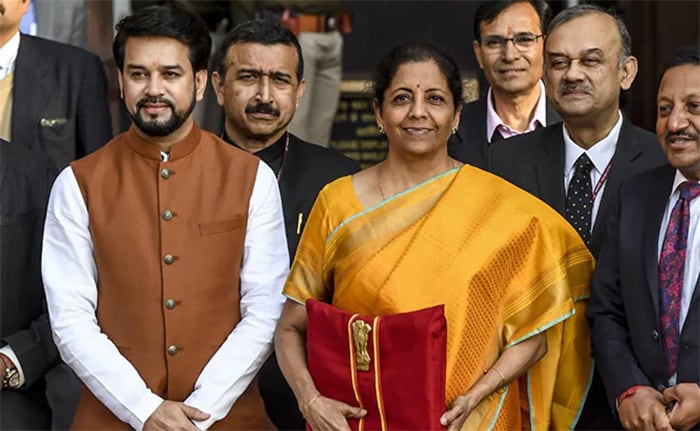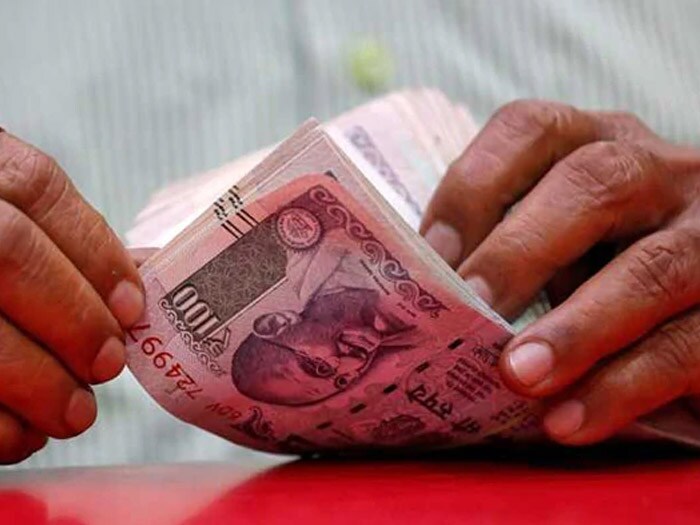From Finance Bill To Fiscal Deficit: 10 Budget Terms You Need To Know
Each year, the Budget - an annual financial statement detailing government spending and revenue - is monitored closely for its possible impact on different sections of the economy. From economists to analysts to tax experts to the general public, all eyes remain on Budget announcements for any signs of changes in policy in the coming period. The Budget is prepared by the budget division in the Ministry of Finance after consultations with other ministries. Here are some terms you need to know to follow Budget announcements better:
-
 Budget documents: It is a set of documents tabled in Parliament as part of Budget. It includes Budget Speech, Annual Financial Statement, Demands for Grants (DG), Expenditure Budget, Receipts Budget, Expenditure Profile, and Macroeconomic Framework and Fiscal Policy Strategy Statements. In this picture, Finance Minister Nirmala Sitharaman is seen carrying Budget documents on February 1, 2020.
Budget documents: It is a set of documents tabled in Parliament as part of Budget. It includes Budget Speech, Annual Financial Statement, Demands for Grants (DG), Expenditure Budget, Receipts Budget, Expenditure Profile, and Macroeconomic Framework and Fiscal Policy Strategy Statements. In this picture, Finance Minister Nirmala Sitharaman is seen carrying Budget documents on February 1, 2020. -
.jpg) Budget speech: It is the speech delivered by the finance minister in Parliament to present the Budget. A copy of the speech is also included in the budget documents. In this picture, Nirmala Sitharaman is seen delivering the Budget speech on February 1, 2020.
Budget speech: It is the speech delivered by the finance minister in Parliament to present the Budget. A copy of the speech is also included in the budget documents. In this picture, Nirmala Sitharaman is seen delivering the Budget speech on February 1, 2020. -
 Finance Bill: A government submits its proposals - in terms of imposition, abolition, remission, alteration or regulation of taxes - to Parliament through this document.
Finance Bill: A government submits its proposals - in terms of imposition, abolition, remission, alteration or regulation of taxes - to Parliament through this document. -
 Financial statement: This document shows the estimated receipts and expenditure of Government of India for the coming period in relation to the year gone by. It also contains details on actual expenditure for the year before past year. The financial statement has three parts: Consolidated Fund, Contingency Fund and Public Account.
Financial statement: This document shows the estimated receipts and expenditure of Government of India for the coming period in relation to the year gone by. It also contains details on actual expenditure for the year before past year. The financial statement has three parts: Consolidated Fund, Contingency Fund and Public Account. -
 Capital budget: Capital budget consists of capital receipts and payments, including investments in shares, loans and advances granted by the Centre to states, public sector companies and other parties. Capital receipts and capital payments together constitute the capital budget.
Capital budget: Capital budget consists of capital receipts and payments, including investments in shares, loans and advances granted by the Centre to states, public sector companies and other parties. Capital receipts and capital payments together constitute the capital budget. -
 Expenditure budget: Estimates made with respect to the amount of money required for a scheme or programme are indicated in the Expenditure Budget. These estimates are shown on a net basis in terms of revenue and capital in this section.
Expenditure budget: Estimates made with respect to the amount of money required for a scheme or programme are indicated in the Expenditure Budget. These estimates are shown on a net basis in terms of revenue and capital in this section. -
 Fiscal deficit: It is the amount of money by which government expenditure in a year exceeds collections (receipts). In other words, the excess of total expenditure over total non-borrowed receipts is called fiscal deficit. To meet the shortfall, government borrows money from the public.
Fiscal deficit: It is the amount of money by which government expenditure in a year exceeds collections (receipts). In other words, the excess of total expenditure over total non-borrowed receipts is called fiscal deficit. To meet the shortfall, government borrows money from the public. -
 Plan outlay: A part of expenditure budget, it details the amount of money earmarked on projects, schemes and programmes announced in the Plan. In other words, it indicates how much money the government requires to achieve certain goals mentioned in the Plan.
Plan outlay: A part of expenditure budget, it details the amount of money earmarked on projects, schemes and programmes announced in the Plan. In other words, it indicates how much money the government requires to achieve certain goals mentioned in the Plan. -
 Taxes: While direct taxes are the taxes that are paid directly by individuals (income tax) and corporations (corporate tax) to government, indirect taxes - such as Goods and Services Tax - are paid to the government indirectly by the end-consumer.
Taxes: While direct taxes are the taxes that are paid directly by individuals (income tax) and corporations (corporate tax) to government, indirect taxes - such as Goods and Services Tax - are paid to the government indirectly by the end-consumer. -
 Inflation: The rate of increase in price is known as inflation. In other words, it is the pace at which prices of goods and services move up.
Inflation: The rate of increase in price is known as inflation. In other words, it is the pace at which prices of goods and services move up.
Advertisement
Advertisement
Advertisement
Advertisement
